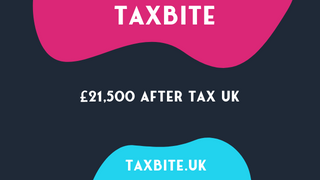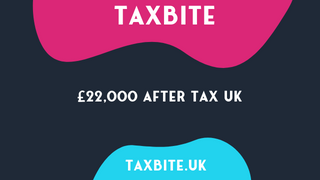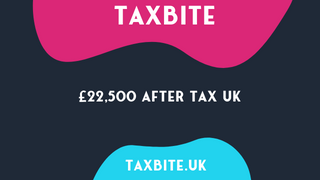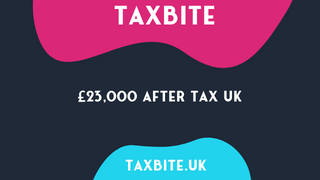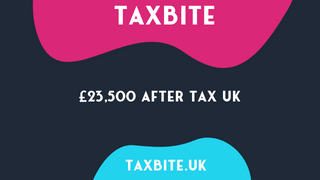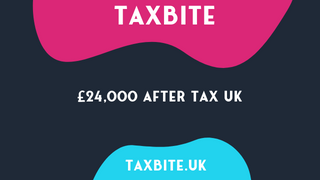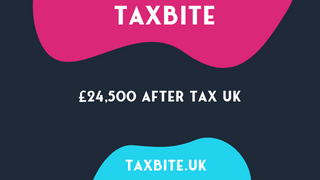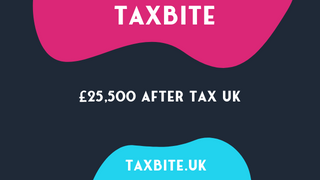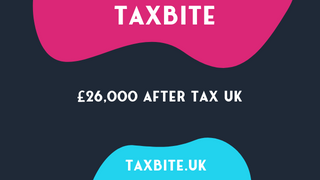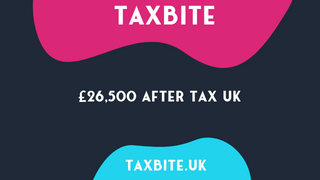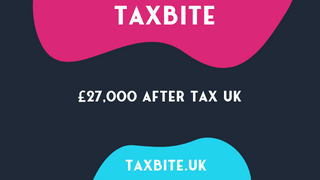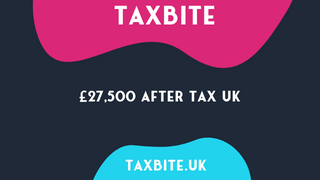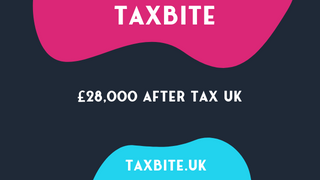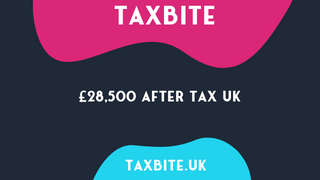In 2023, income tax regulations in the UK are expected to continue to impact the take-home pay of employees. It is essential to understand the basics of income tax, including which types of income are taxable and what tax-free allowances are available, to ensure that you receive your fair share. Let’s dive in and discover how income tax may affect your earnings.
To comprehend UK income tax entirely, it’s important to know which sorts of income are taxed. Such earnings subject to tax in the UK are: salaries and wages from employers, self-employment income, rental income, bonus, or commission from employment, pension income, and savings interest over a certain rate. To be more specific, here are six points to consider:
You should be aware that some allowances and benefits may be exempt from tax. Examples are personal allowances which vary depending on age, blind person’s allowances, and other benefits such as childcare vouchers or workplace parking schemes – all tax-free.
In the UK, there are multiple tax-free allowances for individuals. For example, the Personal Allowance applies to those earning £100,000 or less and less than £12,570 for 2021/22. This allowance can only be claimed once per year.
The Blind Person’s Allowance could reduce an individual’s income tax bill by up to £2,520 if they’re registered as blind or severely sight-impaired.
Married couples or civil partners can transfer up to 10% of their personal allowance to their partner if either earns less than the personal allowance threshold. This is the Marriage Allowance.
Also, the Savings Allowance scheme allows basic rate taxpayers to earn up to £1,000 of interest tax-free, while higher rate taxpayers can earn up to £500.
Shareholders are entitled to a Dividend Allowance of up to £2,000 each year, allowing them to receive dividends from companies tax-free.
Tax-free allowances are only claimable once per year and any unused personal allowance from a tax year can’t be carried forward.
In summary, tax-free allowances are available in the UK and can reduce an individual’s tax bill. It is important to understand the rules and use them correctly.
Wondering how much tax you’ll be paying on a yearly income of £20,000 in 2023? This section will break down the income tax and national insurance, marginal and average tax rates, and the impact of bonuses on net income.
According to current tax rates in the UK, a person earning £20,000 a year would fall within the basic rate tax band, which is 20%. They would also pay National Insurance at a rate of 12%, leaving them with a net income of £16,320.
The marginal tax rate, which is the amount of tax paid on each additional pound earned, would be 32%. The average tax rate, which is the total tax paid as a percentage of income, would be 16%.
It is important to note that tax rates and bands are subject to change in the future. Planning your finances accordingly can help you stay ahead of the game when it comes to your personal finances.
Income tax and National Insurance are important to understand. UK residents must pay taxes on salaries, pensions, dividends and more. But, tax-free allowances can reduce your taxable income.
The table below outlines income brackets and their associated taxes and National Insurance contributions. It helps you know how much you’ll pay.
| Income Bracket | Tax Rate | National Insurance Contributions |
|---|---|---|
| Up to £12,570 | 0% | N/A |
| £12,571 – £50,270 | 20% | 12% |
| £50,271 – £150,000 | 40% | 2% |
| Above £150,000 | 45% | 2% |
Remember, these rates may not be your effective tax rate. This rate takes into account tax-free allowances.
Use an online calculator to estimate take-home pay after deductions. Try Which?, Reed.co.uk or The Salary Calculator 2023 & 2022 Comparison.
Experience the highs and lows of marginal and average tax rates in UK. It’s a thrilling ride!
Explaining Marginal and Average Tax Rates is crucial to understanding how tax payments increase with income. Marginal Tax Rate is the % of tax paid on each extra £ earned as income rises. Average Tax Rate is the total tax paid, divided by the taxable income.
A table below shows the Marginal and Average Tax Rates for different income bands in the UK in 2021. This includes Income Tax and National Insurance contributions.
| Income Band | Marginal Tax Rate | Average Tax Rate |
|---|---|---|
| £0-£12,570 | 0% | 0% |
| £12,571- £50,270 | 20% | 16% |
| £50,271 – £150,000 | 40% | 29% |
| Over £150,000 | 45% | 36% |
Only income above the thresholds in the table is taxed at higher Marginal Tax Rates. Average Tax Rate considers all income sources. Taxpayers with multiple income sources or investment income may have different Marginal and Average Tax Rates due to their specific circumstances.
Marginal Tax Rates were used to fund the war effort during World War II. Governments continued using it after the war to ensure fairness. High-income earners are taxed at higher rates than low-income earners.
Bonuses can have an effect on your net income. You must pay taxes and National Insurance on them. This could put you in a higher tax bracket.
The bonus amount and your tax rate all matter. If it’s over the income tax threshold, you’ll pay 20% tax. If your total earnings are more than £12,570 you’ll pay higher taxes.
Your employer might use a ‘week 1/month 1’ approach. This means they’ll assume it’s your first week or month, regardless of when you get the bonus.
For example, someone earning £20,000 per year gets a £2,000 bonus. Their total earnings are £22,000. With all deductions, their monthly net income is around £1,542. This is lower than without the bonus.
It’s key to think about how bonuses will affect your net income.
Do you ever find yourself scratching your head when it comes to calculating your income tax? Well, worry no more! In this section, we’ll be looking at various tax calculators that can help with accurate calculations.
From the Which? Tax Calculator and Newsletter to the Reed.co.uk Tax Calculator, there is a range of options available to suit your needs. Additionally, The Salary Calculator 2023 and 2022 Comparison provides valuable insight into changes in income tax between the two years. Rest assured that with these accurate tools at your disposal, you can confidently handle your income tax calculations.
The Which? Tax Calculator and Newsletter is a must-have for UK taxpayers wishing to calculate their income tax correctly! Just visit the Which? website to access the calculator and input personal circumstances and income to get an estimate of the amount owed. Newsletter subscribers receive regular updates on changes in tax laws and how to increase take-home pay.
The Calculator provides a breakdown of income tax and National Insurance contributions. This helps taxpayers understand the parts of their income that are taxable and can help reduce their overall tax liability. The tool also helps plan ahead for potential rate increases. It analyzes marginal and average tax rates that apply to various income levels.
The unique feature of factoring in variable income sources such as bonuses makes the Calculator useful for those with fluctuating or irregular earnings. Users can make informed decisions about saving versus spending based on their estimated take-home pay.
In conclusion, the Which? Tax Calculator and Newsletter is an excellent resource for UK taxpayers. It’s a great tool for both seasoned professionals and newcomers in their careers to optimize their finances and maximize their take-home pay.
The Reed.co.uk tax calculator is a helpful tool. It can help you calculate your taxes correctly. If you earn £20,000 a year in 2023, you can use the calculator to determine your tax breakdown. Your gross income is £20,000, and your personal allowance is £12,570. That leaves £7,430 as your taxable income. You will pay a basic rate of 20%, which is £1,486. And, as an employee, you will also have to pay £625 in national insurance contributions. Your employer will contribute £1,230.
Maximizing your take-home pay, especially after tax and NI deductions, is important. A great way to do this is by using the Reed.co.uk tax calculator. It’s user-friendly and can assist you in making smart financial decisions, based on accurate tax estimations. You don’t want to miss out on potential savings, so start using the tool today.
You can also use The Salary Calculator’s 2023 and 2022 comparison tool to compare your potential pay rise.
Comparing the Salary Calculator for 2023 and 2022 can aid in understanding any changes that could affect your take-home pay. This calculator takes income tax and National Insurance deductions, plus tax-free allowances, into account. It lets you compare your net income for both years and make wise decisions about your finances.
In the table, we have compared Salary Calculator results for a £20,000 yearly income in 2022 and 2023. The table includes figures for gross income, tax paid, National Insurance contributions, and net pay after taxes.
| Year | Gross Income | Tax Paid | National Insurance Paid | Net Pay |
|---|---|---|---|---|
| 2022 | £20,000 | £1,600 | £1,244 | £17,156 |
| 2023 | £20,000 | £1,400 | £1,338 | £17,262 |
Note that there’s a decrease in income tax paid from 2022 to 2023 (£1,600 in 2022 and £1,400 in 2023), but an increase in National Insurance contributions (£1,244 in 2022 and £1,338 in 2023). This little shift can result in a different overall net income between years.
If you want to maximize your take-home pay after income tax and National Insurance deductions, using the Salary Calculator can help. You can consider bonuses or salary changes throughout the year and make informed decisions about your finances. For example, John recently got a new job with a higher salary of £25k, but his bonus varies depending on company performance. He uses these calculators to plan his expenses around potential outcomes.
Maximising post-tax take-home pay is essential for those looking to optimise earnings. Utilising allowances and tax credits, understanding the tax system, plus taking advantage of tax-efficient investments are key to achieving this goal.
In 2023, those earning £20,000 pre-tax and NICs can maximise their take-home pay by benefiting from the Personal Allowance, rising to £12,570. This means only £7,430 is taxed at the basic rate of 20%. Additionally, the NICs ceiling will be increased to £50,270, reducing rates to 2% for those earning over this amount.
Tax-efficient investments, such as ISAs, can also reduce the tax burden. These offer tax-free savings and individuals can deposit up to £20,000 yearly. Plus, workplace pension contributions attract tax relief, further reducing annual income tax.
In short, take-home pay can be maximised by understanding the tax system, utilising allowances and tax credits, plus considering tax-efficient investments. With the Personal Allowance and NICs ceiling due to increase in 2023, along with other tax-saving tools, it’s essential to protect your earnings. By following these tips, individuals can optimise their take-home pay and make the most out of their income.
If you earn £20,000 a year in the UK, you will be taxed £2,469. Your net pay will be £17,531 per year or £1,461 per month. Your average tax rate is 12.3%, and your marginal tax rate is 33.3%. The marginal tax rate means that any additional income will be taxed at this rate. For example, an increase of £100 in your salary will be taxed £33.25, so your net pay will only increase by £66.75. A £1,000 bonus will generate an extra £668 of net income, while a £5,000 bonus will generate an extra £3,338 of net income.
There are various free tax calculators available online, including the ones provided by talent.com, which.co.uk, reed.co.uk and thesalarycalculator.co.uk. These calculators allow you to input your salary and determine how much tax and National Insurance you will pay based on the tax year and your location in the UK. Some calculators also include factors such as student loans, pension contributions, and bonus payments.
If you live and work in Scotland, you may have to pay different income tax rates than the rest of the UK. The tax bands and rates for Scotland are different, and the which.co.uk tax calculator has a specific “Do you live in Scotland?” tab for accurate calculations.
If you have a student loan, repayments are deducted from your income before tax is calculated. The repayment amount is based on your income and the repayment plan you have chosen. You can enter your student loan information into a tax calculator, such as the ones provided by thesalarycalculator.co.uk, to see how this affects your net pay.
Assuming full-time work at 40 hours a week, your hourly rate for a £20,000 yearly salary is £9.63. This can be useful to calculate your income for part-time work or overtime hours.
Here’s a list of similar salaries:



